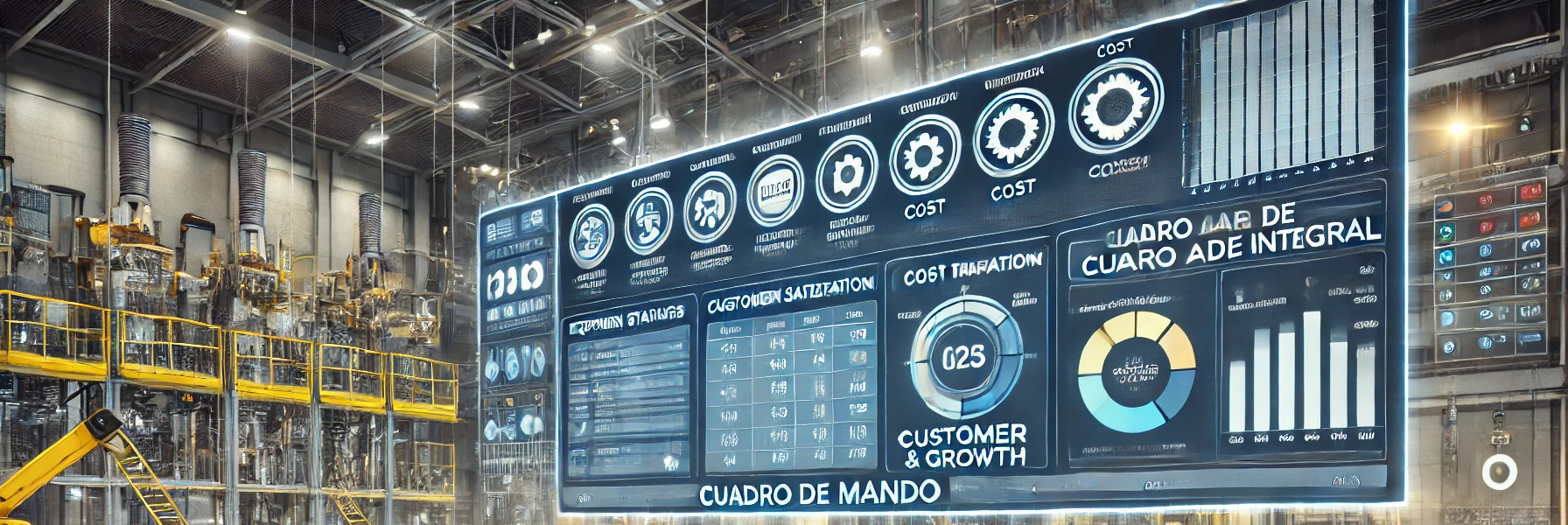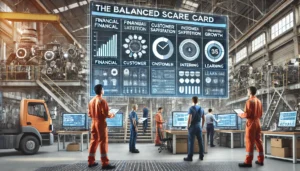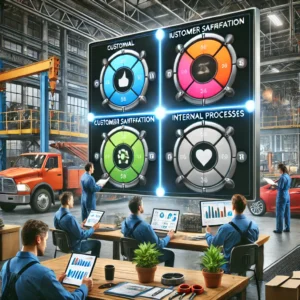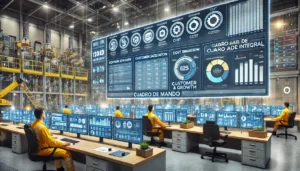The Balanced Scorecard (BSC) has become an essential tool for optimising industrial maintenance management. This methodology offers a global vision that goes beyond financial indicators and helps companies align their strategic objectives with operational efficiency and customer satisfaction. Its implementation in industrial maintenance allows data to be transformed into strategic decisions that improve results in all key areas of the business.
The BSC emerged in the 1990s as an alternative to traditional management systems that focused primarily on financial indicators. Its creators, Robert Kaplan and David Norton, were generally looking for a tool that would enable companies to translate their strategy into concrete actions and measure their progress towards achieving their goals.
Prospects of the Balanced Scorecard in industrial maintenance.
The BSC divides management into four basic perspectives: financial, customer, internal processes, and learning and growth. In the context of industrial maintenance, these perspectives are applied as follows:
- Financial Perspective: This area measures the costs associated with maintenance, such as the cost per unit produced, the cost of preventive maintenance and the return on investment (ROI) in maintenance. The financial perspective ensures that maintenance investments are efficient and create value. Controlling costs is crucial to maximising profitability, especially when dealing with large production volumes.
- The customer’s perspective: Although maintenance is not always associated with customer satisfaction, in an industrial environment it is essential to ensure equipment availability to meet internal and external customer demands. Indicators such as Mean Time To Repair (MTTR) and equipment availability are critical to ensure that downtime is minimised and production processes continue smoothly.
- Internal process perspective: In industrial maintenance, the efficiency of internal processes is key to avoiding unexpected downtime and reducing breakdowns. Proper management of the preventive maintenance plan and efficiency in spare parts management are essential to maintain a high level of operability. CMI allows us to identify areas for improvement and optimise the management of these processes.
- Perspectives for learning and growth: Industrial maintenance depends not only on efficient machinery, but also on a highly skilled technical team. The CMI helps companies measure the level of staff training, talent retention and innovation in the department. Maintaining a motivated and constantly learning team contributes to continuous improvement and long-term sustainability.
 Implementation of the Balanced Scorecard in industrial maintenance.
Implementation of the Balanced Scorecard in industrial maintenance.
Implementing the BSC in a maintenance department should be a structured process. The first step is to clearly define the maintenance strategy and align it with the strategic goals of the organisation. Key indicators are then identified in each of the four perspectives of the BSC, selecting those that best reflect the department’s performance.
Once the indicators have been defined, clear targets are set and concrete action plans are developed to achieve them. It is essential that all employees are aware of the BSC, its purpose and how each member of the team can contribute to achieving the objectives.
The BSC also needs to be integrated into day-to-day management. It is not a static tool, but a dynamic system that needs to be continually reviewed and adapted to the changing needs of the business. Regular monitoring of the indicators ensures that the company stays on track and that improvements are made where they are needed.
Benefits of using the Balanced Scorecard in Industrial Maintenance.
There are many benefits to using BSC in industrial maintenance management:
- Strategic Alignment: The CMI ensures that maintenance activities are aligned with business objectives, facilitating informed decision making and efficient use of resources.
- Improved operational efficiency: By monitoring internal processes, CMI helps to identify inefficiencies and take corrective action quickly. This reduces downtime and increases productivity.
- Customer focus: Ensuring equipment availability and reliability increases customer satisfaction by reducing production downtime and improving on-time delivery.
- Continuous growth: Tracking indicators related to staff training and motivation ensures that the maintenance team is always ready to meet new challenges and maintains a culture of continuous improvement.
Challenges and recommendations for implementing the BSC in maintenance.
Implementing the Balanced Scorecard is not without its challenges. One of the most common challenges is resistance to change, which can come from employees themselves if they do not understand the benefits of the BSC. To overcome this barrier, it is important to involve the whole team from the outset and clearly communicate how the BSC can improve the overall performance of the department.
Another challenge can be the lack of accurate data to feed the key indicators. This can be addressed by implementing a monitoring and control system that allows relevant data to be collected on an ongoing basis. It is also important to set realistic and achievable targets to keep the team motivated and avoid frustration.
Do you want to improve the management of your maintenance team? Optimise your operations with the help of experts!
Complete our contact form and count on us to help you maintain your equipment.
Finally, regular monitoring of the BSC is recommended to ensure that it remains aligned with the objectives of the organisation and the maintenance department. The BSC needs to be constantly adapted to remain a useful tool in a constantly evolving environment.
The Balanced Scorecard is a powerful strategic tool for industrial maintenance management. It not only aligns maintenance operations with the overall goals of the organisation, but also optimises processes, improves internal customer satisfaction and fosters a culture of learning and growth. Properly implemented, CMI can make a huge difference to the efficiency and performance of any industrial maintenance department.




